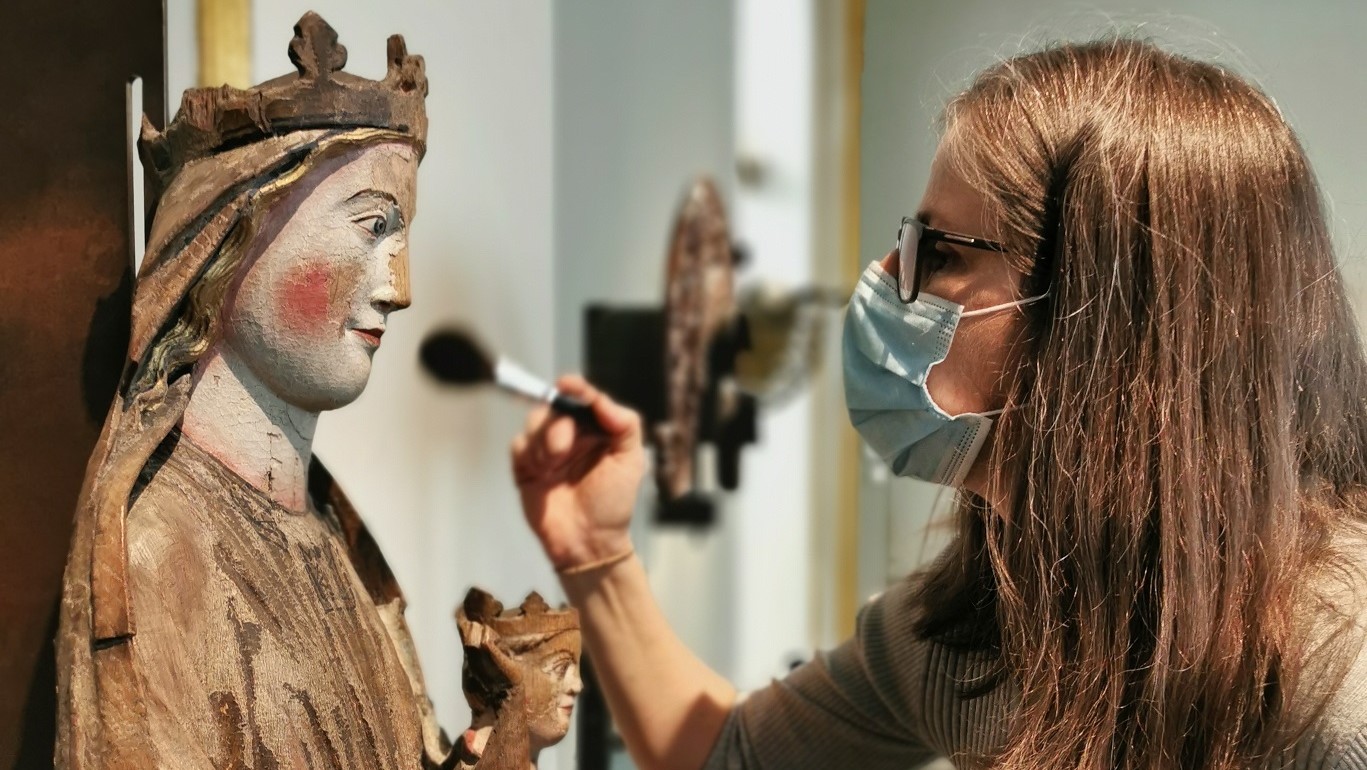Why dust?
All surfaces collect dust over time. The dust may contain particles from pollution from the city outside the museum that can damage the surfaces. When dust attracts moisture from the air, they become small moist micro-sponges on the objects. It can speed up the decomposition of the old materials.
Are the objects in the medieval hall fragile?
Some of the objects have fragile layers of paint and decomposed wood, while others are quite stable. However, all contact increases the risk of injury and wear. That is why we protect the sculptures with barrier tape or glass showcases. The stave church portals look solid, but the wood is around 800 years old and small wood chips can come loose. The conservators try to slow down the degradation processes by protecting the works from touch, and by controlling the humidity and light in the premises. If something is damaged and is in danger of becoming more damaged, we take them in for treatment.
What materials are in their brushes?
We use very soft brushes when we remove dust. Some are regular synthetic makeup brushes, others are goat hair brushes.
The museum has been closed for 6 months, was there a lot of dust, or less than usual?
We have dusted on a regular basis even while the museum was closed. The halls have hardly been in use during the pandemic and thus dust is not swirled to the same extent. However, the building has been renovated. Much of the dust is taken in by the public. When you analyze the dust itself under a microscope, you find a fairly large amount of skin particles, hair from visitors, lint from clothes and so on. If people go in with winter jackets, we see more dust than if they leave it outside.
Did it take a long time to dust off everything?
Dust drying of medieval objects requires a light hand and that you pay close attention to where you place the brushes. Therefore, it takes its time.
Are conservators more patient than others?
We are very patient with historical artifacts. Then we can sit for hundreds of hours in the microscope and gently attach loose paint or clean surfaces. Whether the same patience applies for the rest of life probably varies greatly 😊
How does it feel to get closer to the objects than everyone else?
It feels like a privilege. We get to know the objects in a completely unique way as we are allowed to handle them, turn them around and look at the surfaces under a microscope. We get insight into how they are constructed and what materials they are made of, but also, most importantly of all, what condition they are in and what they can withstand.
